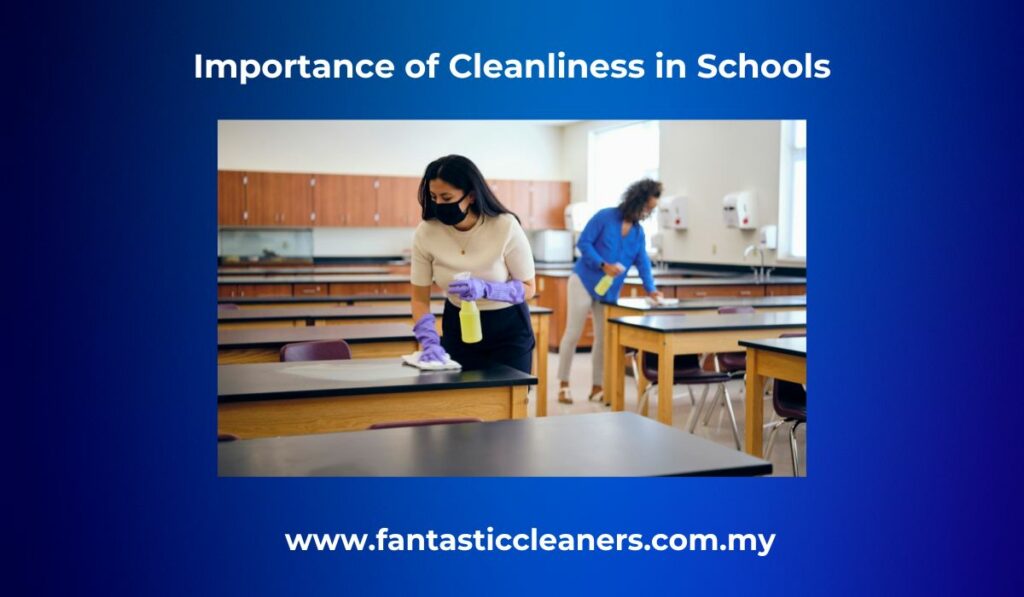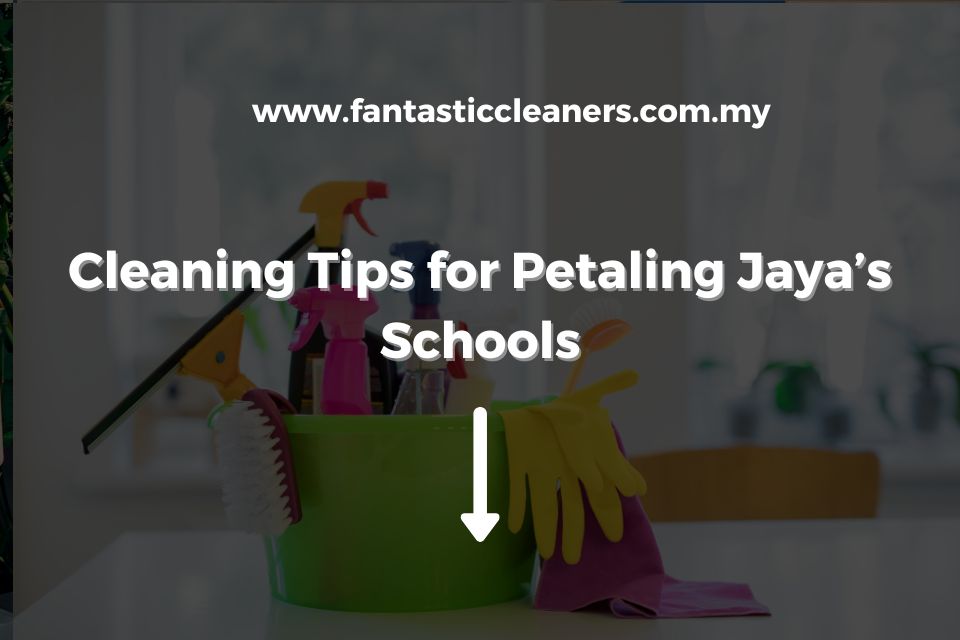Essential Cleaning Advice for Schools in Petaling Jaya: Don’t Miss Out!
Petaling Jaya’s schools have a huge role in shaping the future of its students. To create a conducive learning environment, cleanliness and hygiene must be kept in check. Here are some cleaning tips to ensure optimal cleanliness and a healthy atmosphere for the schools in Petaling Jaya.
- Start by setting regular cleaning schedules. Cover all areas, such as classrooms, hallways, toilets, libraries, and common areas. This way, you make sure every corner is properly attended and maintained.
- Manage waste well within the school premises. Provide designated bins for recyclable materials, food waste, and general waste. Promote responsible waste disposal habits among staff and students for a greener and cleaner environment.
- Pay close attention to washroom cleanliness. Disinfect toilets, sinks, and handrails regularly. Keep an adequate supply of soap and toilet paper too. This avoids germs spreading among students and staff.
- Invest in quality cleaning products that are effective yet safe for use in an educational environment. Environmentally-friendly cleaners protect students and promote sustainable practices. Train janitorial staff to use them efficiently for enhanced effectiveness.
In summary, keeping Petaling Jaya’s schools clean and hygienic is key for a conducive learning environment. Follow scheduled cleaning, manage waste well, ensure hygienic washrooms, and use eco-friendly products. Let’s prioritize cleanliness in our educational institutions for a healthier and more productive future!
Table of Contents
Importance of Cleanliness in Schools

Cleanliness in schools is essential. It aids in providing a great learning environment for students. A clean school promotes better health, hygiene and increases the educational system’s efficiency.
A clean school fosters creativity and productivity. It reflects discipline and order, which is vital for great learning. Students are motivated and engaged when surrounded by cleanliness.
Maintaining cleanliness in schools helps to prevent disease spread. Cleaning and disinfection of surfaces, furniture and other objects reduces the risk of illnesses. This is especially important during outbreaks or pandemics.
Cleanliness also helps teachers and staff members. A clean and organized work environment boosts their efficiency and lowers stress levels.
A clean school sends a positive message to parents and visitors. It shows that the institution takes pride in cleanliness and cares for its students. This improves the school’s reputation.
Cleanliness should extend outdoors too. Clean playgrounds, gardens and sports facilities promote physical activity.
To make cleanliness a priority, systems need to be in place for waste management and regular cleaning schedules. Involving students in cleaning activities teaches them responsibility towards their surroundings.
General Cleaning Tips
Sweeping and mopping floors regularly is essential. It boosts a classroom’s look and avoids potential health risks.
Disinfecting surfaces like desks, chairs and handles can prevent germs from spreading among students and staff. Using the right cleaning solutions is key for successful sanitation.
Having enough ventilation is vital for fresh air quality in the school. Open windows or use air purifiers to let in clean air and avoid smells.
Also, proper waste management prevents pests and keeps the environment clean. Garbage collection with proper disposal should be done across the school.
Taking special care to clean each area of the school guarantees hygiene standards are met without overlooking cleanliness.
Cleaning Tips for Different Areas in Schools
Maintaining a clean school is key for students’ well-being and productivity! Here are some tips for different areas:
- Classrooms: Empty bins daily, sanitize desks/chairs, dust, mop floors, and ensure ventilation.
- Restrooms: Check/refill soap, stock toilet paper/towels, disinfect surfaces, clean mirrors, and keep floors dry.
- Common Areas: Vacuum carpets, wipe tables/chairs, remove stains, organize storage, and check lighting.
- Cafeterias: Clean food prep areas after use, sanitize dining tables/chairs, sweep floors, and maintain refrigeration.
To further boost hygiene in schools, encourage handwashing, train janitorial staff, and use eco-friendly cleaning products. Let’s create a healthier learning environment for our students by following these tips!
Best Practices for Ensuring Cleanliness
Maintaining neatness in schools is important for the overall health and well-being of students. This creates a conducive learning atmosphere, which boosts focus and reduces the chance of illnesses. To guarantee cleanliness is kept, a few best practices can be put in place.
- Scheduling regular cleaning: Structuring a cleaning plan guarantees all sections of the school are cleaned consistently. This includes classrooms, corridors, lavatories, and common areas.
- Having adequate cleaning supplies: Providing cleaning staff with enough resources such as disinfectants, mops, brooms, and vacuums ensures they have the proper tools to sanitize diverse surfaces.
- Encouraging personal hygiene habits: Teaching students about the value of individual hygiene, such as scrubbing their hands routinely and disposing of rubbish correctly, is fundamental in sustaining cleanliness within the school.
- Installing waste management systems: Establishing proper waste management systems with allocated bins for recyclables and general waste helps keep the school neat and orderly.
- Doing regular inspections: Carrying out frequent inspections to spot any parts that need urgent attention lets you take prompt action to solve any cleanliness issues before they get worse.
- Teaming up with expert cleaning services: Joining forces with specialist cleaning services periodically ensures deep cleaning of hard-to-reach places and supplies extra assistance in sustaining hygiene standards.
With these best practices in effect, schools can set up an environment where neatness is prioritized and preserved. But, it’s vital to remember that each school’s requirements may differ based on its size, student population, and particular needs. By modifying these best practices to suit individual situations, schools can form effective cleanliness protocols that contribute to a healthy learning environment.
Conclusion
In order to keep Petaling Jaya schools hygienic, effective cleaning tips have been discussed. These tips help ensure a safe and healthy atmosphere for students and staff.
Proper waste management is a crucial factor. Schools must have an efficient disposal system to stop debris build-up and bad smells. Regular rubbish collection and recycling should be set up to promote sustainability.
Restrooms must be kept sanitary. There should be plenty of soap, hand sanitizer, and toilet paper available to encourage good hygiene. Surfaces and fixtures should be disinfected regularly to stop the spread of germs and bacteria.
Classroom cleanliness is important too. An everyday routine for dusting and vacuuming should be set up to remove allergens like dust mites and pollen. Furniture should be wiped down with the right cleaning agents to keep the environment neat.
Particular areas like science labs, art studios, and gymnasiums need special attention. Protocols must be followed for cleaning equipment, disposing of hazardous materials, and sanitizing surfaces.
Outdoor spaces like playgrounds and sports fields must also be looked after. Regular inspections and maintenance are needed to ensure these areas are free from hazards like broken equipment and stagnant water sources.
Frequently Asked Questions
FAQs about Cleaning Tips for Petaling Jaya’s Schools:
1. How often should schools in Petaling Jaya be cleaned?
It is recommended to clean schools in Petaling Jaya daily, with thorough disinfection at least once a week. Regular cleaning helps maintain a clean and healthy environment for students and staff.
2. What cleaning products should be used in schools?
Use EPA-approved disinfectants and cleaning products that are safe for use in educational settings. Make sure to follow the instructions on the labels and use them as directed to ensure effectiveness.
3. How can schools prevent the spread of germs?
Encourage regular handwashing among students and staff, especially before meals and after using the washroom. Provide hand sanitizers in common areas and promote respiratory etiquette, such as covering coughs and sneezes with a tissue or elbow.
4. What are some tips for cleaning classrooms?
Regularly wipe down surfaces, including desks, chairs, and doorknobs, with disinfectant wipes or sprays. Vacuum and mop the floors, and ensure proper ventilation by opening windows when possible.
5. How can schools maintain clean restrooms?
Restrooms should be cleaned and disinfected multiple times a day. Use appropriate cleaning products for toilets, sinks, and floors. Ensure a constant supply of soap, paper towels, and tissues, and regularly check for any plumbing issues.
6. Are there any special considerations for cleaning during the COVID-19 pandemic?
During the COVID-19 pandemic, it is crucial to follow the guidelines provided by health authorities. Increase the frequency of cleaning and disinfection, paying extra attention to high-touch surfaces. Consider hiring professional cleaning services in PJ for thorough disinfection if needed.

